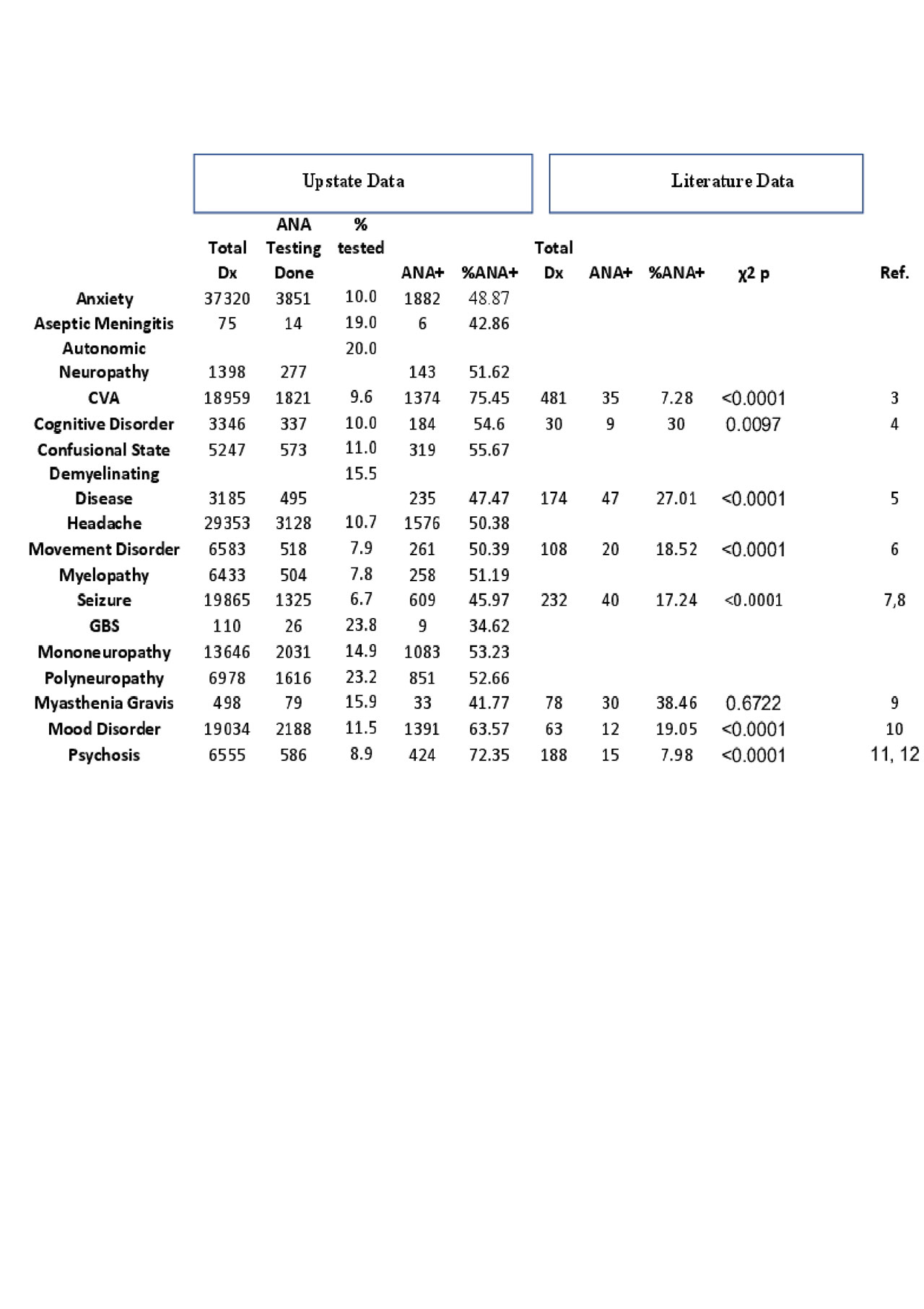Session Information
Date: Sunday, November 10, 2019
Title: Measures Of Healthcare Quality Poster I: Testing, Screening, & Treating
Session Type: Poster Session (Sunday)
Session Time: 9:00AM-11:00AM
Background/Purpose: The American College of Rheumatology (ACR) established case definitions of 19 specific neuropsychiatric syndromes seen in patients with systemic lupus erythematosus (SLE) (1). Therefore, we evaluated the frequency of antinuclear antibody (ANA) screening by immune that has the greatest sensitivity to detect SLE (2).
Methods: This quality improvement project examined the electronic medical records (EMR) of patients diagnosed with 17 neuropsychiatric conditions documented at our institution between 2013 until 2019 (Table 1). Patients with existing SLE have been excluded. ANA testing was done by indirect immunofluorescence using HEp-2 cells as antigen (2). Significant ANA titer was defined as titer >1:50. Our findings were compared to published studies in similar patient populations which were available in PubMed for 8/17 conditions. Statistical analysis was performed with chi-square test using GraphPad version 5.0 software.
Results: Table 1 outlines the findings in a total number of 178,585 patients with 17 neuropsychiatric diagnosis in our cohort. ANA was assessed in 19,369 subjects (10.7%). Rates of testing ranged between 6.7% (seizure) and 23.8% (Guillain-Barre syndrome, GBS). Surprisingly, ANA testing was done in 8.9% of patients with psychosis. Each population was evaluated for the numbers of patients who were screened and found to have elevated ANA. Compared to peer-reviewed literature our cohort was larger in number with greater prevalence of positive ANA with the exception of myasthenia gravis, which unveiled similar levels of prevalence.
Conclusion: Up to 80% of SLE manifest a neuropsychiatric disorder, which may benefit from treatment targeting the immune system and inflammation. The prevalence ANA testing was surprisingly low in patients with neuropsychiatric disorders. However, among the tested patients, the prevalence of ANA exceeded those in the literature in 7/8 conditions, which likely reflects a preference for testing in cases where disease manifestations occurred outside the nervous system. Further studies are clearly warranted to substantiate the role of systemic inflammatory diseases, such as SLE, in neuropsychiatric disorders.
To cite this abstract in AMA style:
Ben Gabr J, Perl A. Infrequent Screening but High Prevalence of Antinuclear Antibodies in Patients with Neuropsychiatric Disorders [abstract]. Arthritis Rheumatol. 2019; 71 (suppl 10). https://acrabstracts.org/abstract/infrequent-screening-but-high-prevalence-of-antinuclear-antibodies-in-patients-with-neuropsychiatric-disorders/. Accessed .« Back to 2019 ACR/ARP Annual Meeting
ACR Meeting Abstracts - https://acrabstracts.org/abstract/infrequent-screening-but-high-prevalence-of-antinuclear-antibodies-in-patients-with-neuropsychiatric-disorders/

